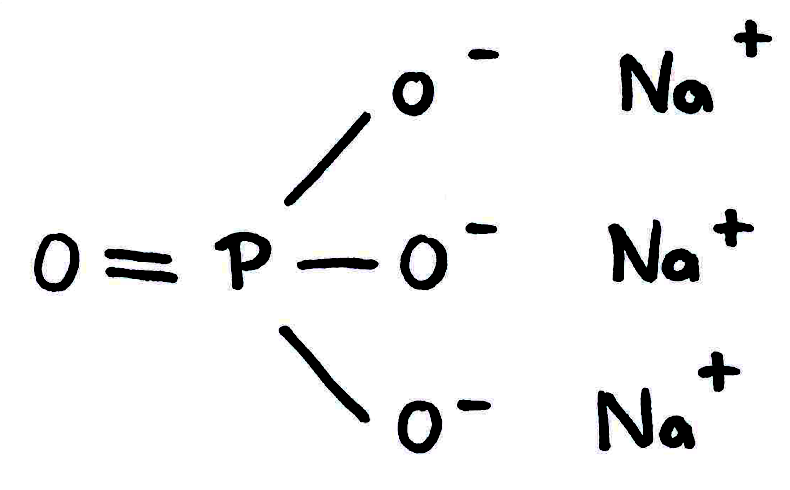Recently updated on: January 15th, 2025
Sodium phosphate (Na3PO4) is a non-organic compound used in the food industry as an additive marked E339. Its properties are also used in medicine and production of chemical detergents.
Sodium phosphate in food
As a food additive, sodium phosphate is identified as E339 and used primarily as acidity regulator, clamping agent and to increase product shelf-life. It is frequently added to goods such as:
- corn flakes, muesli,
- granola bars,
- processed cheeses,
- meat products and deli meats.
Thanks to its balancing properties, sodium phosphate helps maintain pH levels. As a metal ion chelating compound, it has additional protective properties. It keeps the color of products, and protects vitamin C against oxidation. Sodium phosphate also has a stabilizing effect on meat, dairy and fish products, as well as reduces fat oxidation. Thus it helps extend product shelf-life and reduce the amount of salt used.

Sodium phosphate
Sodium phosphate is the sodium salt of phosphoric acid. It is used in the production of chemicals and food (under the code E339).
The properties of sodium phosphate stabilize the texture of foods it is added to. It cures meat and meat products by binding protein. In processed cheese, it acts as an emulsifier, keeping oil and water mixed together, and thus increasing their viscosity and texture.
Sodium phosphate is also useful in cooking. Added to baked goods, such as cookies and cakes, it acts as a leavening agent, helping the dough rise. As a yeast-like ingredient, it is also frequently used in meat and fish batter. Acting as a surfactant in liquid ingredients, it is used to achieve foaming or whipping.
Medical applications of sodium phosphate
Sodium phosphate is not only used in the foodstuffs industry, but in pharmaceutical industry as well. Its primary use is the supplementation of phosphorus to prevent deficiency of this micronutrient. As a calcium-binding compound, sodium phosphate can also help patients with too high levels of this element.
Moreover, it can be used as a laxative. After administration, it causes a bowel movement within 30 minutes to 6 hours, most likely thanks to increasing the volume of liquid in the intestine. It can be used to treat occasional constipation, and is also recommended to prepare the bowel for some medical procedures (for example, colonoscopy).
Application of sodium phosphate in other products
Thanks to their chelating properties (primary the ability to bind divalent ions) and as surfactants, phosphates are also used in detergents and for water softening. However, the use of sodium phosphate in production of laundry detergents and soaps is decreasing, , because it causes water eutrophication – by increasing the amount of nutrient substances and leading to excessive growth of algae and cyanobacteria. For similar reasons, the production of phosphate fertilizers is being scaled down. Sodium phosphate continues to be sometimes used for industrial water treatment, and protection of installations against the build-up of limescale.
Bibliography:
- https://vitapedia.pl/fosforan-sodu-e339
- https://pl.thpanorama.com/articles/qumica/fosfato-de-sodio-propiedades-riesgos-y-usos.html
- https://www.aptekarzpolski.pl/historia-farmacji/apteczna-historia-fosforu/


